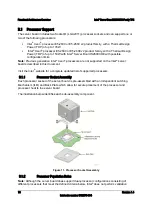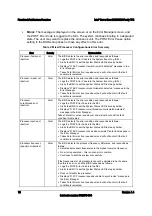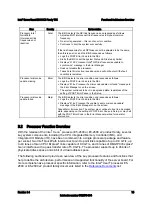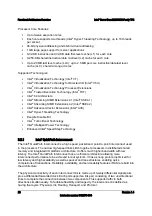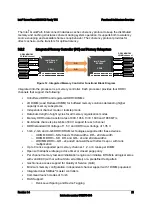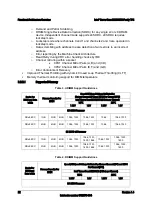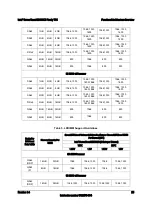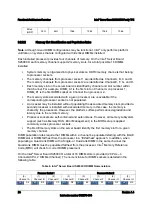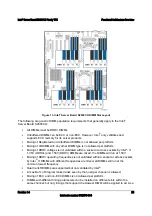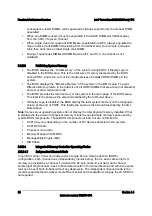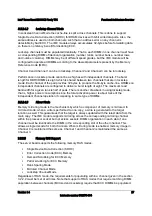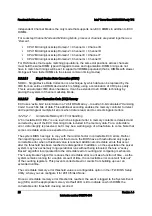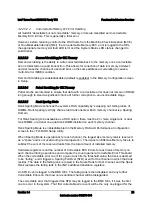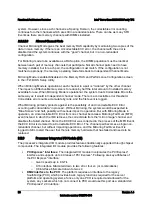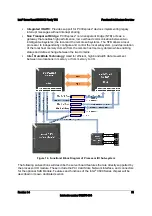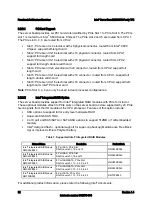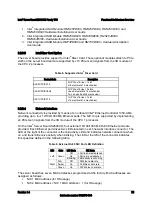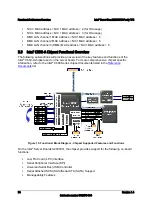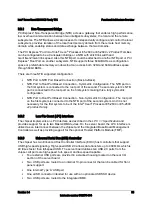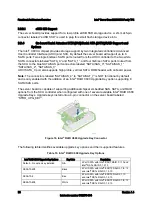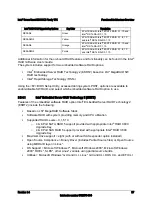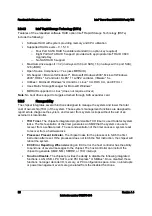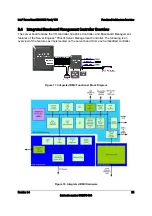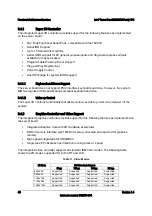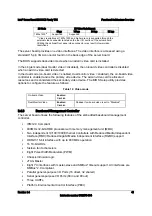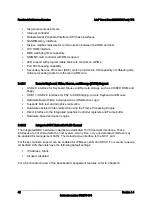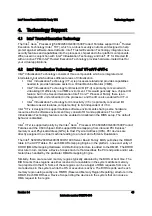
Functional Architecture Overview
Intel® Server Board S2600CO Family TPS
28
Revision
1.4
Intel order number G42278-004
Independent Channel Mode is the only mode that supports non-ECC DIMMs in addition to ECC
DIMMs.
For
Lockstep Channel Mode and Mirroring Mode, processor channels are paired together as a
“Domain”
.
CPU1 Mirroring/Lockstep Domain 1= Channel A + Channel B
CPU1 Mirroring/Lockstep Domain 2= Channel C + Channel D
CPU2 Mirroring/Lockstep Domain 1= Channel E + Channel F
CPU2 Mirroring/Lockstep Domain 2= Channel G + Channel H
For RAS modes that require matching populations, the same slot positions across channels
must hold the same DIMM type with regards to size and organization. DIMM timings do not
have to match but timings will be set to support all DIMMs populated (that is, DIMMs with slower
timings will force faster DIMMs to the slower common timing modes).
3.2.2.5.1
Singel Device Data Correction (SDDC)
SDDC – Single Device Data Correction is a technique by which data can be replaced by the
IMC from an entire x4 DRAM device which is failing, using a combination of CRC plus parity.
This is an automatic IMC driven hardware. It can be extended to x8 DRAM technology by
placing the system in Channel Lockstep Mode.
3.2.2.5.2
Error Correction Code (ECC) Memory
ECC uses “extra bits” -64-bit data in a 72-bit DRAM array – to add an 8-bit calculated “Hamming
Code” to each 64 bits of data. This additional encoding enables the memory controller to detect
and report single or multiple bit errors when data is read, and to correct single-bit errors.
3.2.2.5.2.1
Correctable Memory ECC Error Handling
A “Correctable ECC Error” is one in which a single-bit error in memory contents is detected and
corrected by use of the ECC Hamming Code included in the memory data. For a correctable
error, data integrity is preserved, but it may be a warning sign of a true failure to come. Note that
some correctable errors are expected to occur.
The system BIOS has logic to copy with the random factor in correctable ECC errors. Rather
than reporting every correctable error that occurs, the BIOS have a threshold and only logs a
correctable error when a threshold value is reached. Additional correctable errors that occur
after the threshold has been reached are disregarded. In addition, on the expectation the server
system may have extremely long operational runs without being rebooted, there is a “Leaky
Bucket” algorithm incorporated into the correctable error counting and comparing mechanism.
The “Leaky Bucket” algorithm reduces the correctable error count as a function of time – as the
system remains running for a certain amount of time, the correctable error count will “leak out”
of the counting registers. This prevents correctable error counts from building up over an
extended runtime.
The correctable memory error threshold value is a configurable option in the <F2> BIOS Setup
Utility, where you can configure it for 20/10/5/ALL/None.
Once a correctable memory error threshold is reached, the event is logged to the System Event
Log (SEL) and the appropriate memory slot fault LED is lit to indicate on which DIMM the
correctable error threshold crossing occurred.
Summary of Contents for S2600CO series
Page 12: ......



